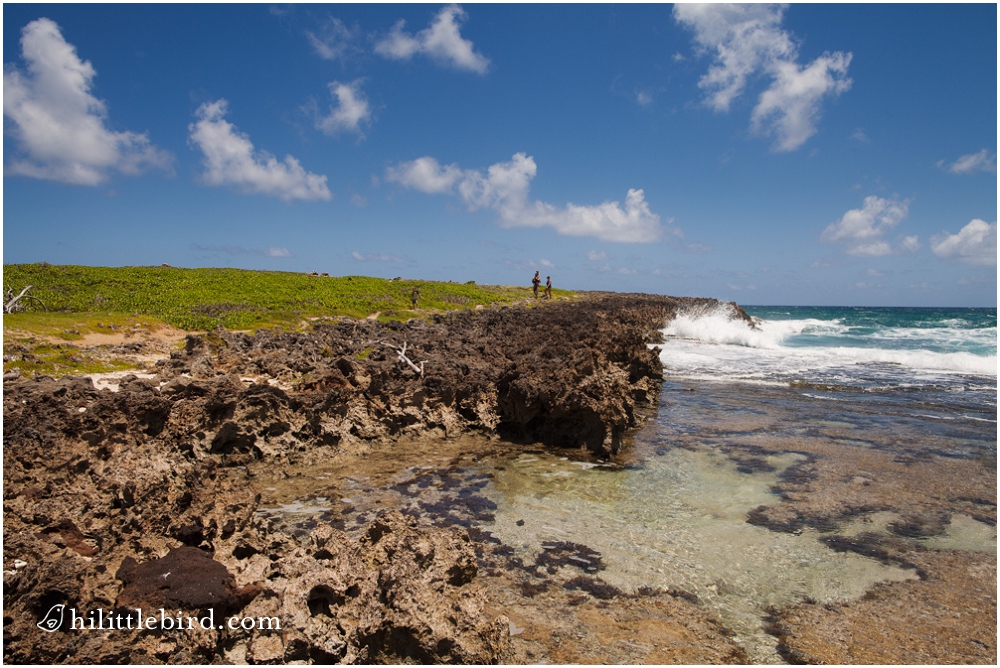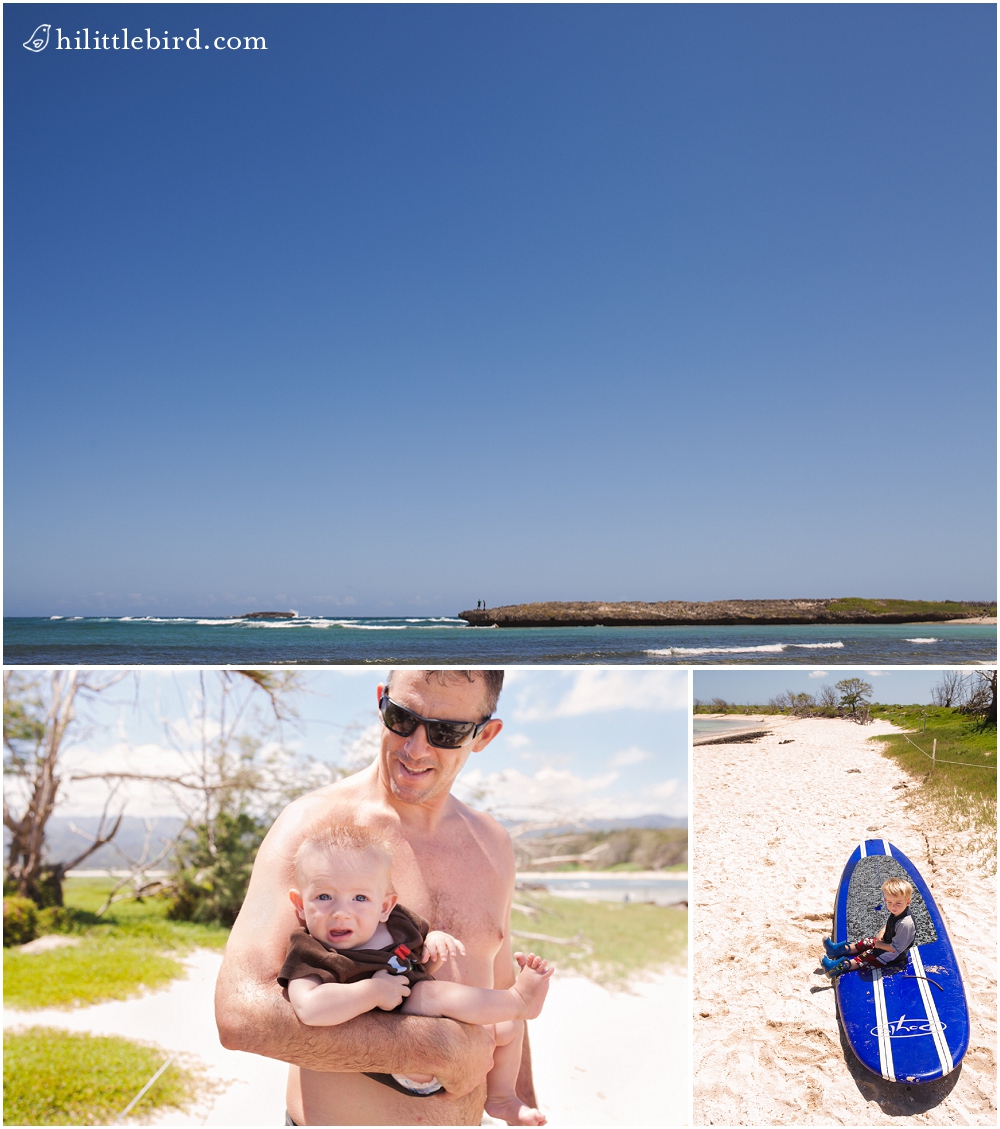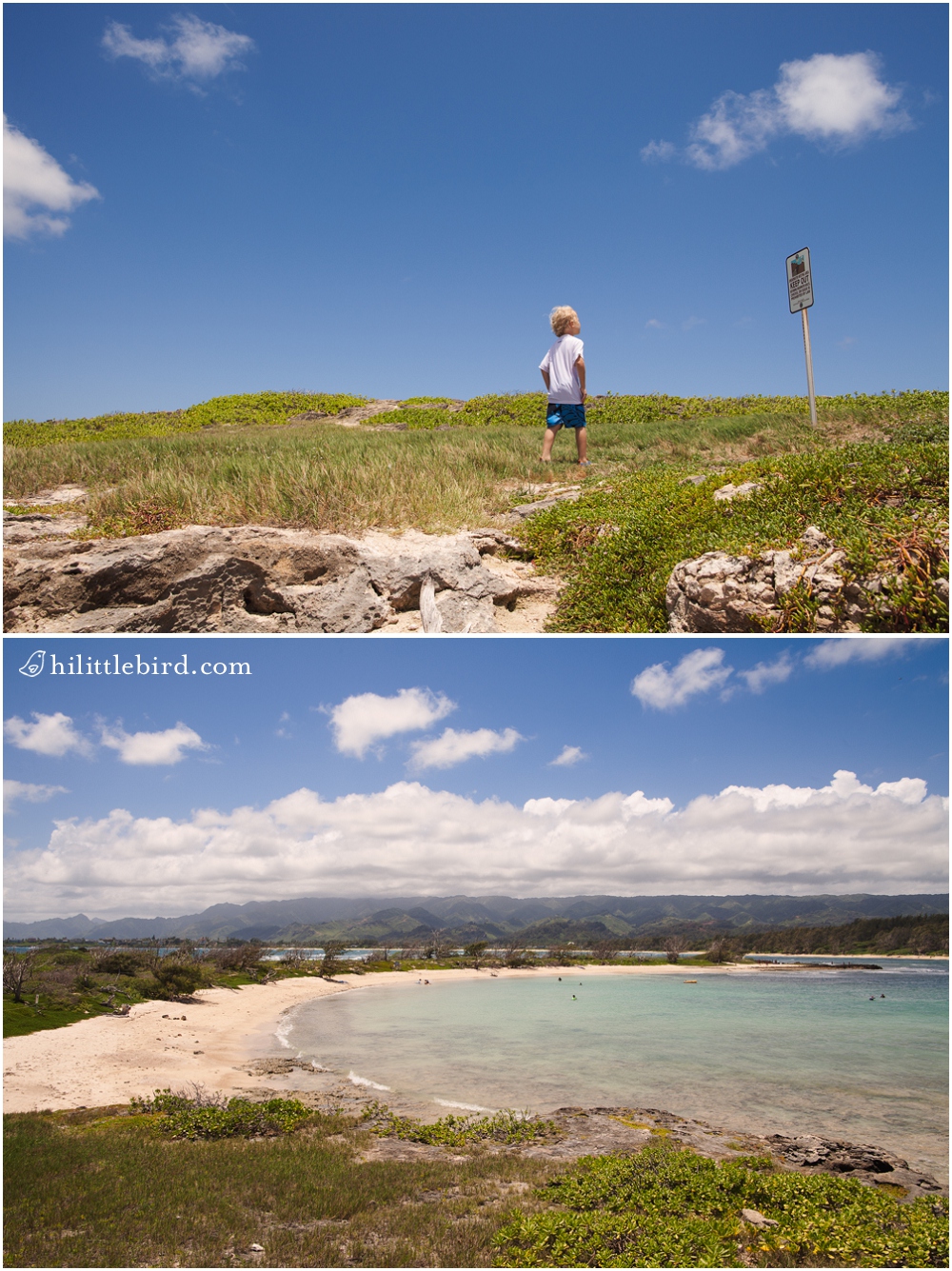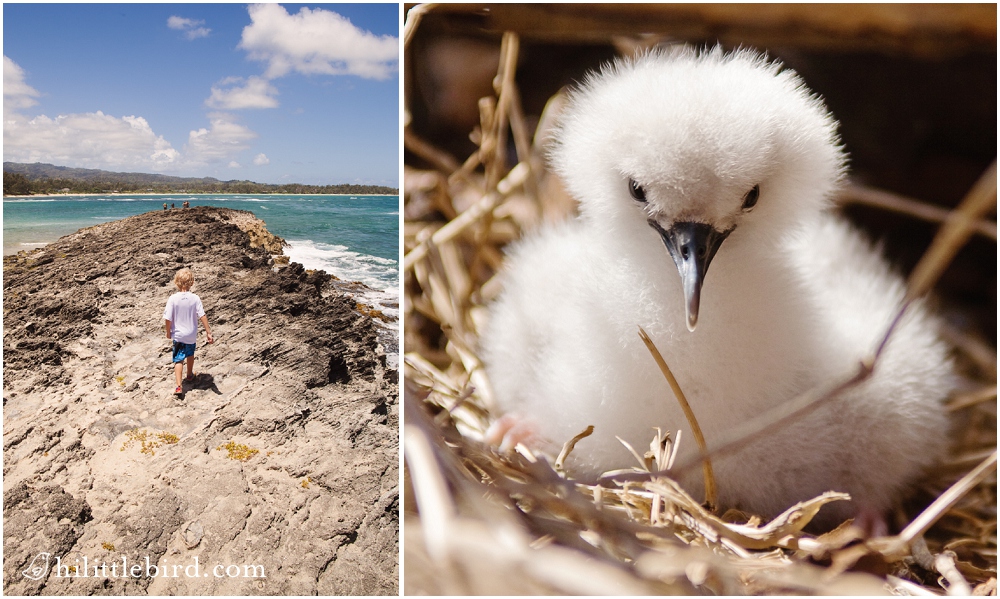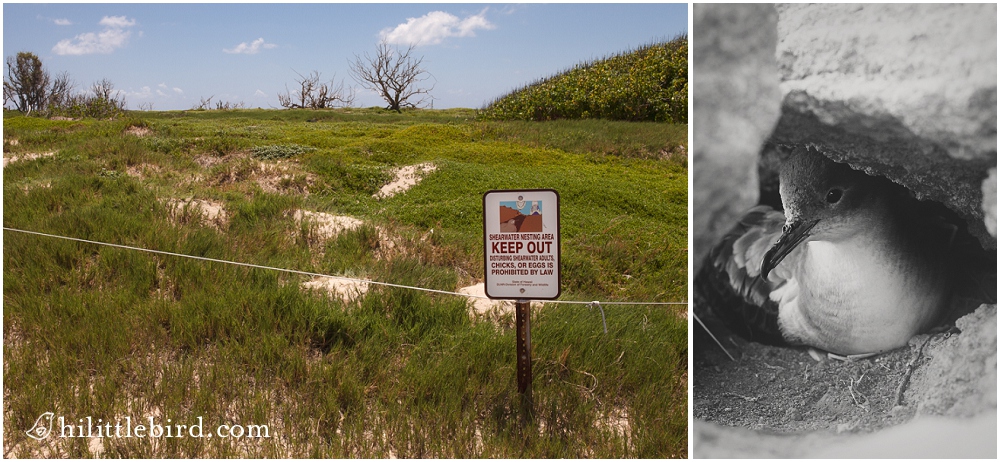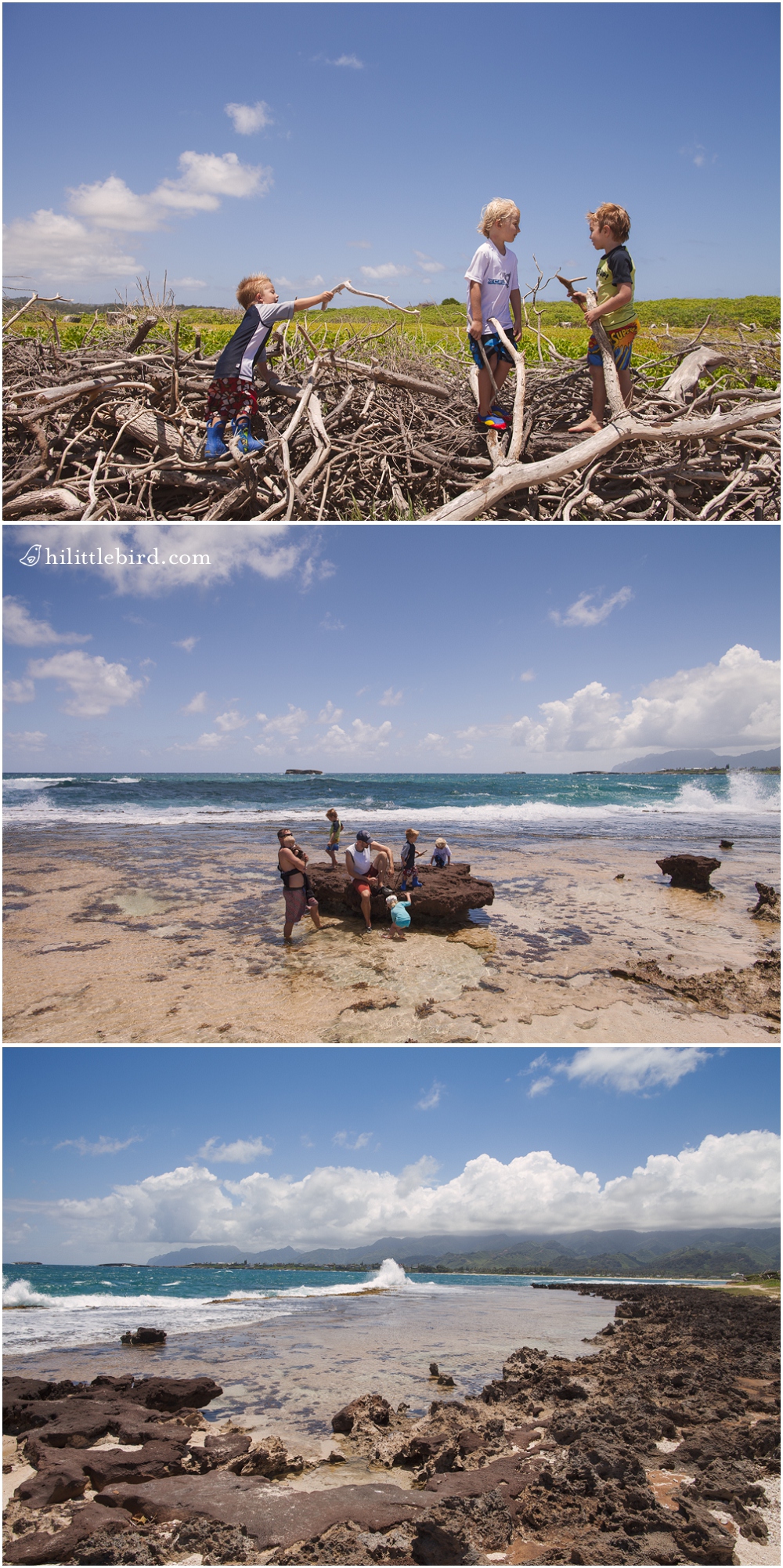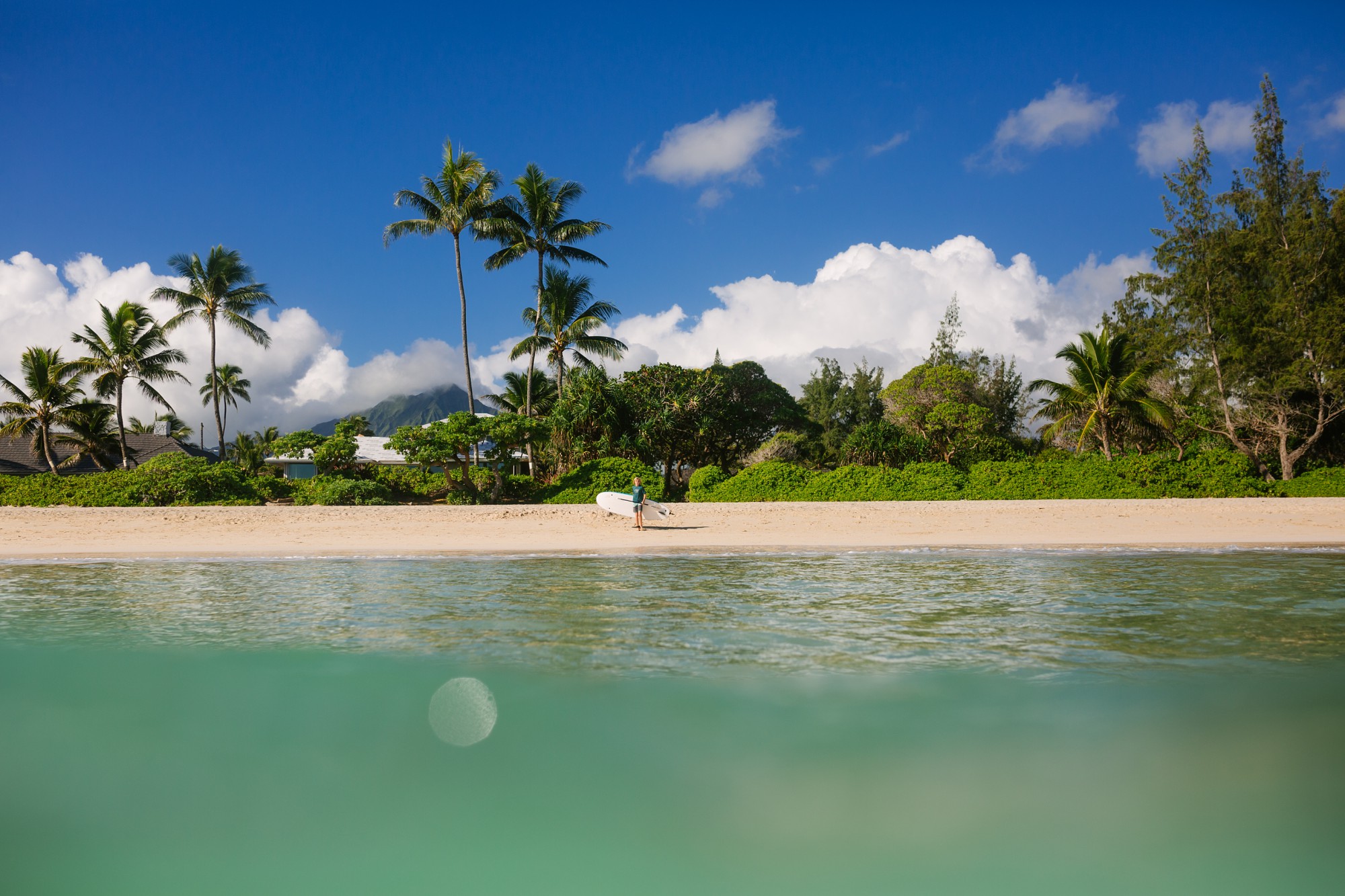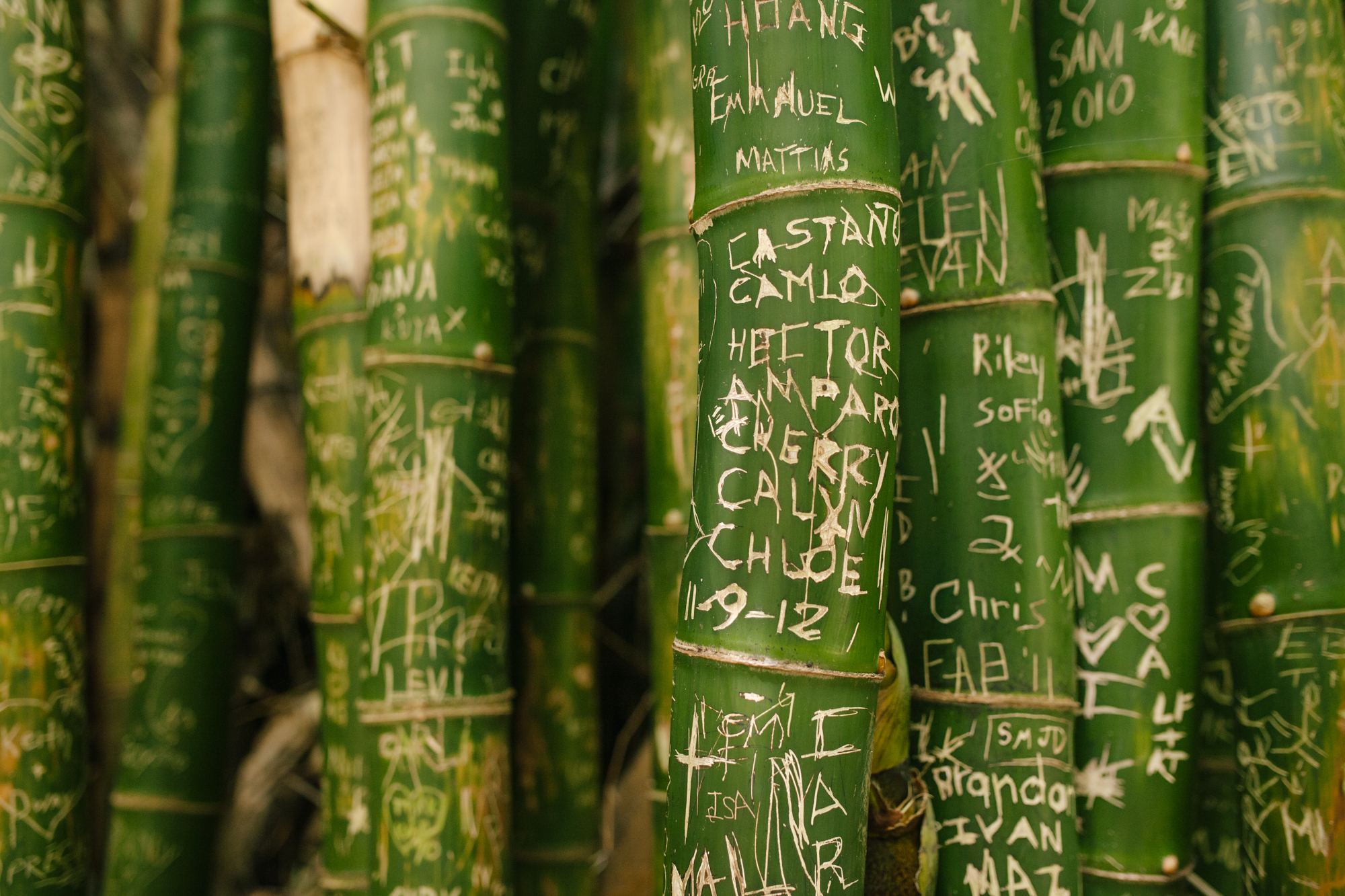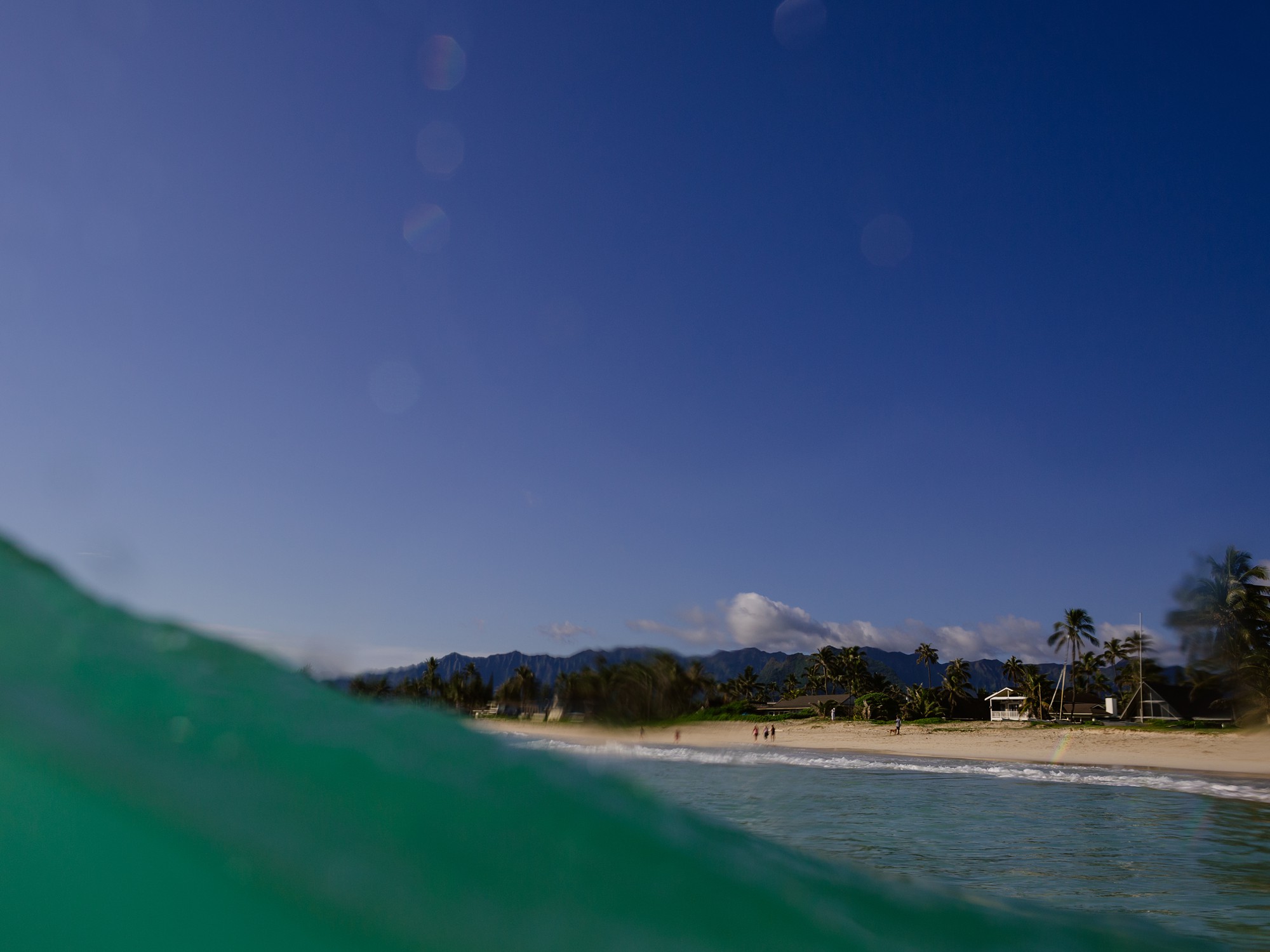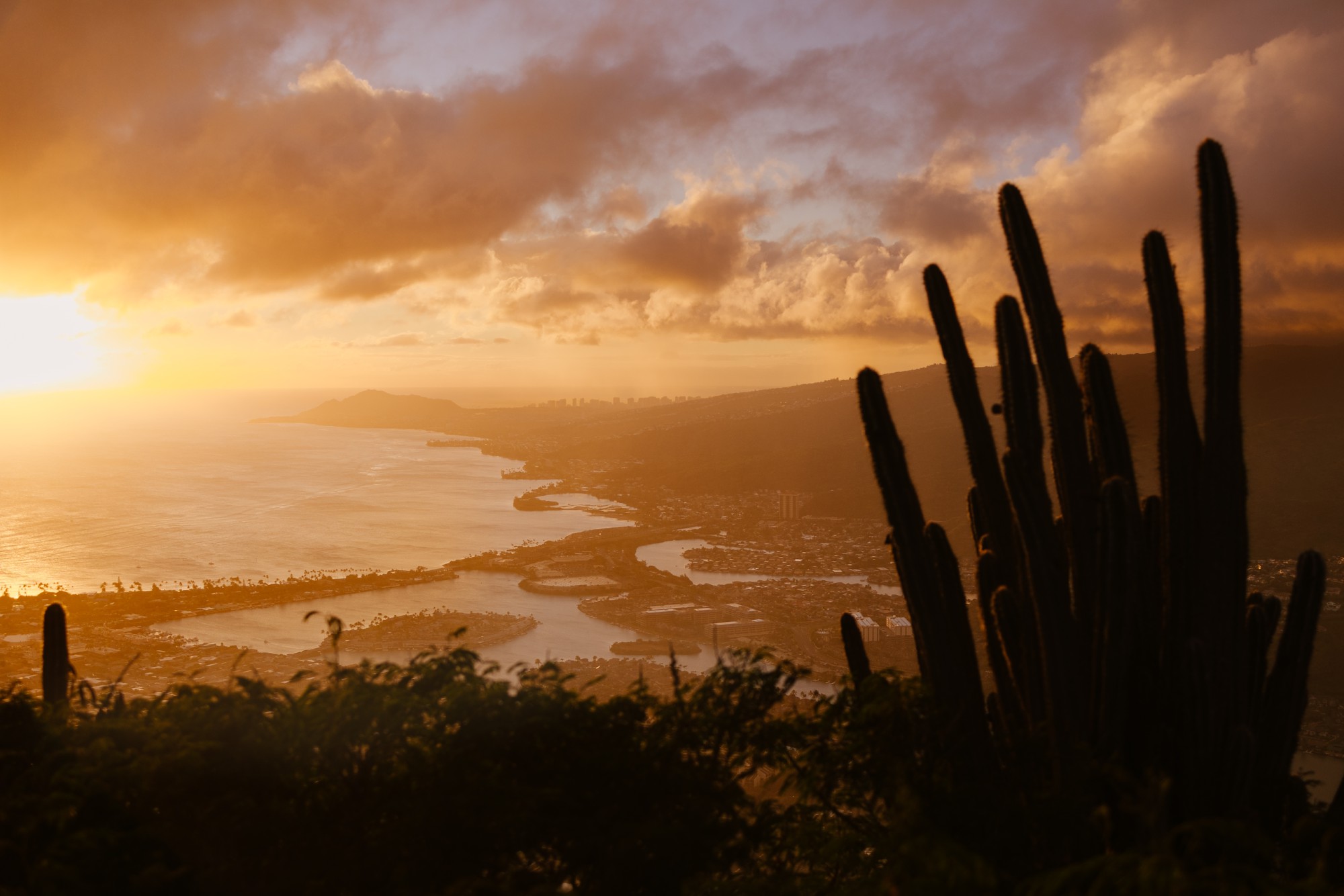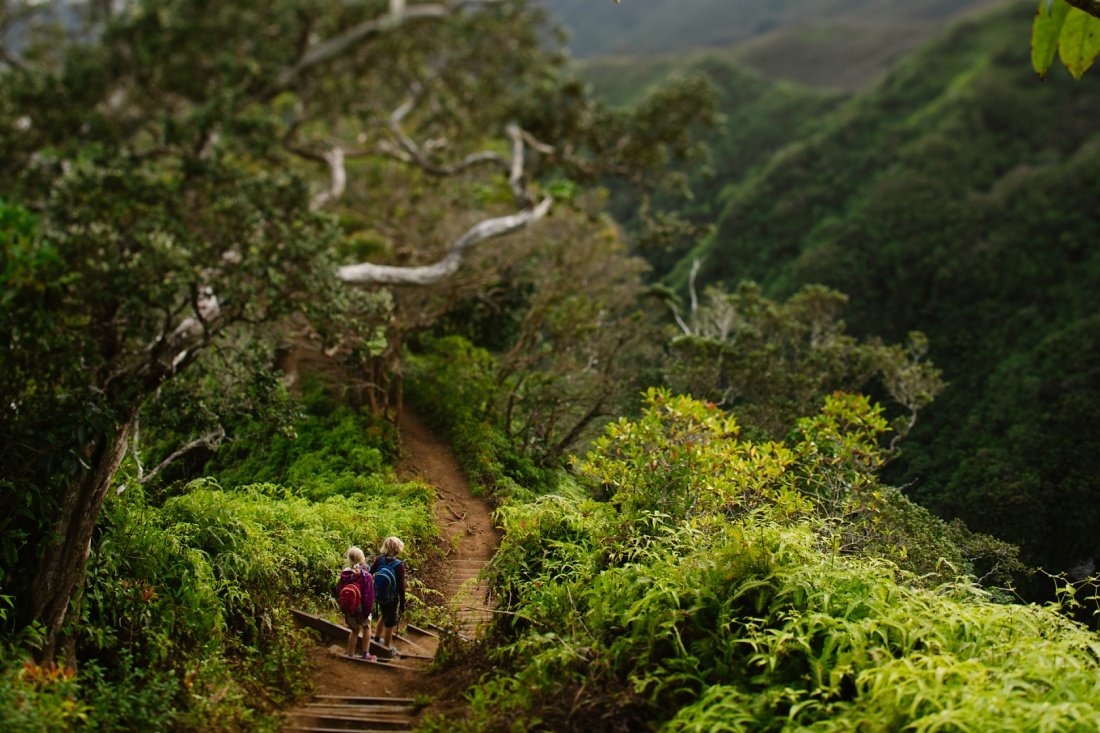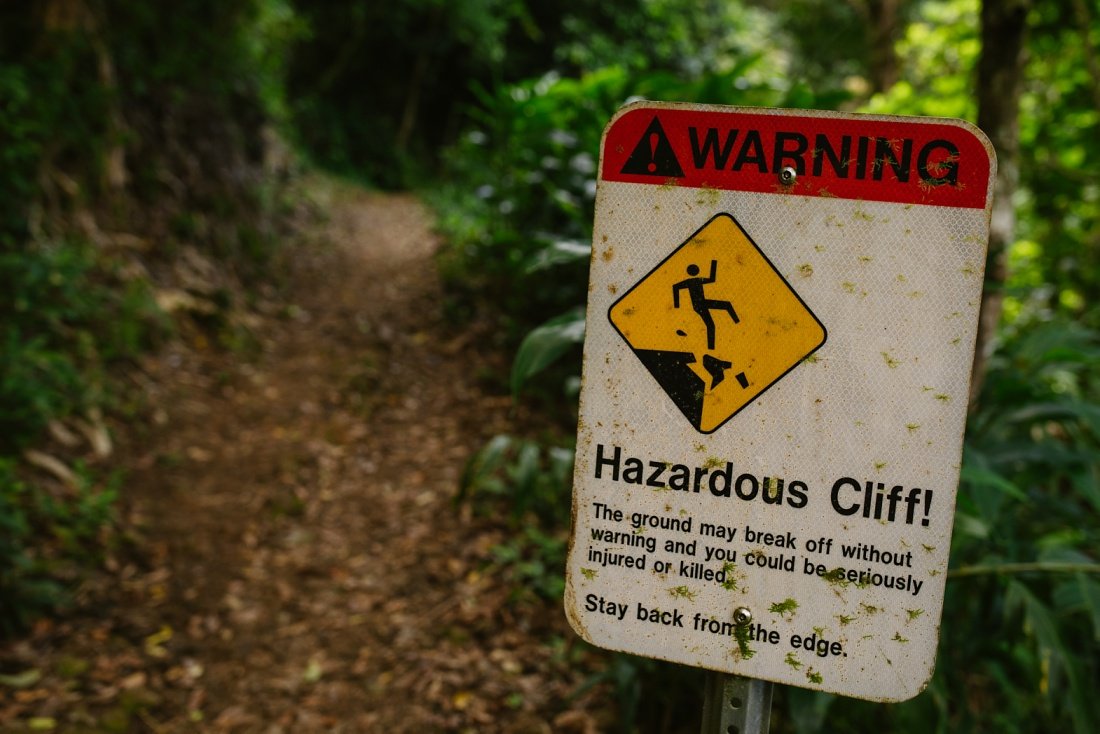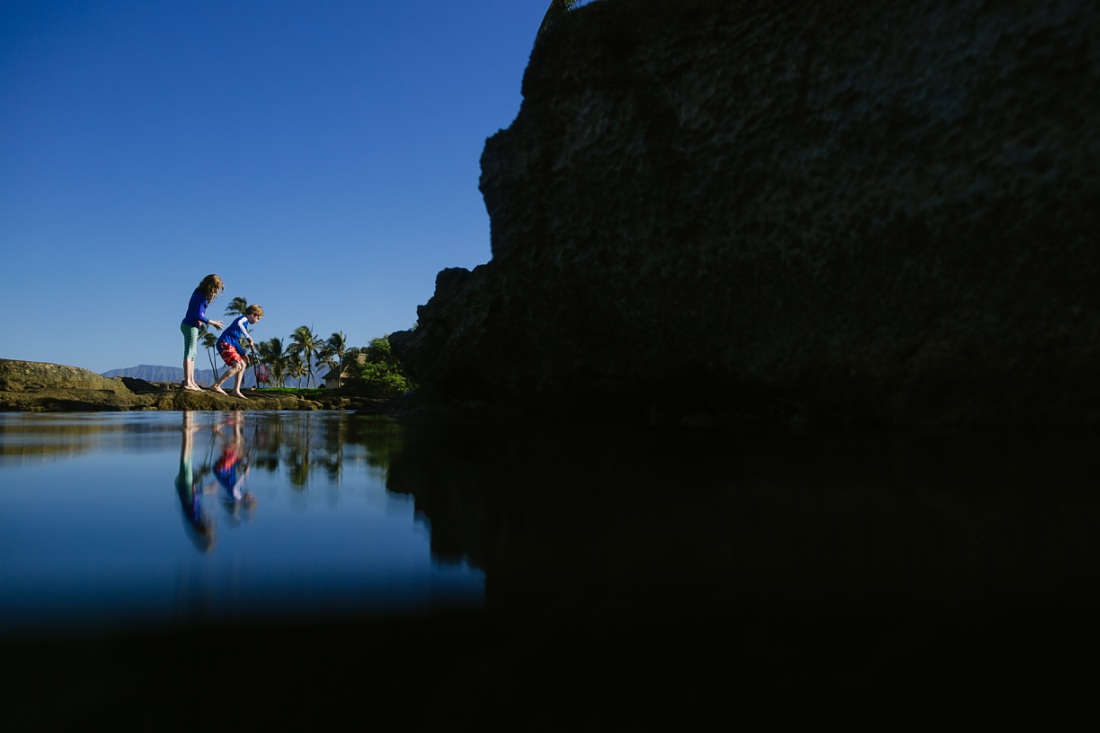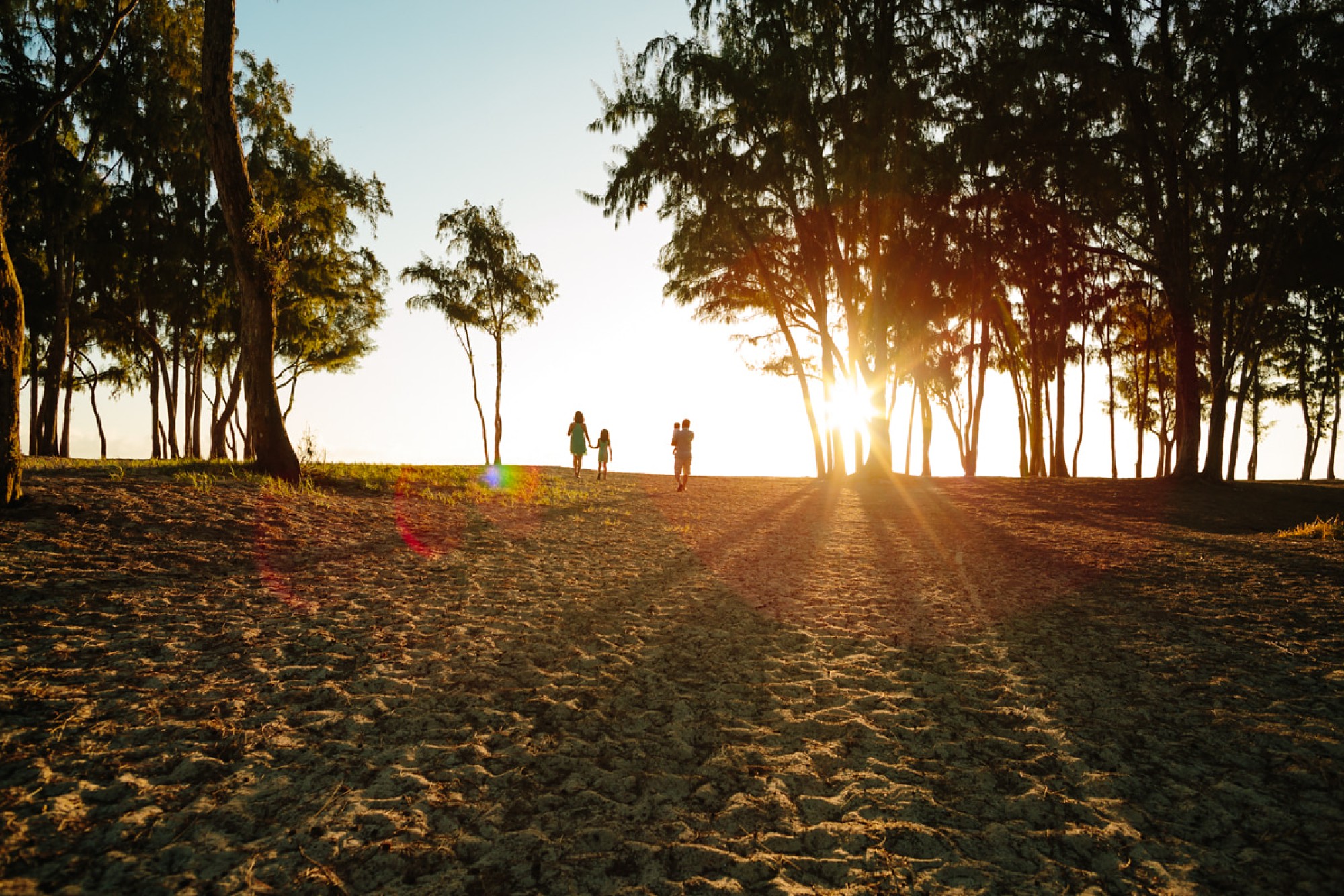A Sanctuary for Seabirds (and People)
August is my favorite time of year to visit Goat Island (Mokuauia Island) in Laie. That’s when you can find newly hatched Wedge-tailed shearwater chicks. Shearwaters are a type of seabird that nest in burrows underground and their chicks look like little gray puff balls (as in super cute).
Years ago, I worked for Bishop Museum on a conservation project to document and protect Hawaii’s offshore islets – some of the last remnants of Hawaii’s coastal ecosystems. The dramatic rocks and sea stacks scattered you see around the main islands act as a sanctuary for seabirds (and other natives). Their relative isolation makes them a safe place for seabirds to make their burrows away from predators like cats, dogs, mongoose, and rats. I was excited to take the kids on an adventure and share this special place.
The Best Time to Visit
Evenings and early mornings are the best times to visit if you want to see seabirds. During the day, the adults are feeding or doing shift changes (both parents forage and feed the chick) and the chicks hide deep in their burrows. When it’s cooler, bored chicks will sit at the entrance to their burrows so you may catch a glimpse. And in the evening, adults return to the island in mass where they form “clubs” to chat with friends.
We attempted an early morning visit, but with two families and the expected chaos of 5 young kids it didn’t quite go as planned. By the time we made it to the island, the sun was blazing overhead and most baby chicks were tucked deep in their burrows. We did get lucky with a few lounging adults and chicks sitting in shallow burrows though.
Not interested in Seabirds?
If you’re not a big bird fan, it’s still a lovely spot to visit. You can search for crabs and shells, or splash in the protected water of the lagoon on your own private island. Before you leave, make the trip around the perimeter of the island or at least check out the east end where jagged rocks meet the pounding surf and breathe in the dramatic beauty. To protect the fragile burrow system in the island’s interior, stay on the beach or the perimeter trail, and leave dogs at home.
Getting to Goat Island
Where to find it
Goat Island is located in Laie on the northeast corner of Oahu about an hour’s drive from Waikiki. To get to the island, park at Malaekahana State Park. Head to the left of the bathrooms and out to the point directly across from the island. From there you can paddle, swim, or walk out. The crossing is easiest at low or mid-tide when the surf is mellow. At other times, you can stumble into holes in the reef and big waves can knock you over.
How to get there
The best method to get to Goat Island depends on weather conditions, what gear you have, and what you’re comfortable with.
- Paddle. If you have a kayak, stand-up paddle board, or really anything that floats, you can launch from the beach and look for a sandy landing area near the western tip of the island or you can land on the sandy crescent-shaped beach on the islands north shore.
- Swim. If you’re a confident ocean swimmer and have no gear, you can make the
- Walk. At low tide, you can walk to the island. The crossing is over reef so protect your feet and reduce damage to the reef by wearing reef tabis. These felt bottomed booties can be found at local fishing stores and sometimes Walmart or Longs.
Weather considerations
It is normally windy in this area so expect wind and choppy waves. In the winter months there can be wrap around from big winter swells making the crossing too dangerous. Check weather conditions before heading out.
Tide also plays a role in your crossing. The water depth varies depending on the tide and the exact path you take but at low tide, an adult can wade to the island. If it’s low tide, and the water is rough, it can make walking more challenging as waves can knock you over. For swimmers, low tide can make it too shallow to swim in some areas.
Personally, I’ve made this crossing (for work) many times. Without kids, I prefer to wear a light waterpoof backpack (if needed) and tabis and swim most of the way, walking if it gets too shallow. With kids or more gear, it’s easier to kayak. Landing can be difficult with wind/rocks/waves so I still like tabis so I can jump out early and walk the last bit to a safe landing spot.
What to pack for your island adventure
Most people like to spend a few hours exploring or lounging on the island after making the effort to get there. Here’s what I recommend bringing for your Goat Island adventure –
- Kayak, paddleboard, bodyboard (unless walking/swimming)
- Water
- Reef-safe sunscreen
- Additional protection for sunny days – long sleeved shirt, hat, sunglasses
- Reef tabis (or at least slippers for walking around the island)
- Drybag
- Towel
- Snacks
- Camera
What not to pack when visiting Oahu’s offshore islets
These islands are part of the Hawaii state seabird sanctuary. They protect nesting seabirds along with other native flora and fauna, so please be a good steward when visiting.
- Dogs. On several occasions a single dog has killed over 90 birds in a short period. Pleae leave your beloved companions at home.
- Hitchhikers. The relative isolation of Hawaii’s offshore islets helps keep native flora and fauna safe from introduced plants and pests. Check your gear for sticky seeds or ants that may try to hitch a ride to the island.
Looking for a More Mellow Oahu Family Adventure?
If you’re not up for a water crossing, there are more low-key areas to explore in the area. Malaekahana itself is fun for camping or picnicking or you can head down the coast to beautiful Kahana Bay.
